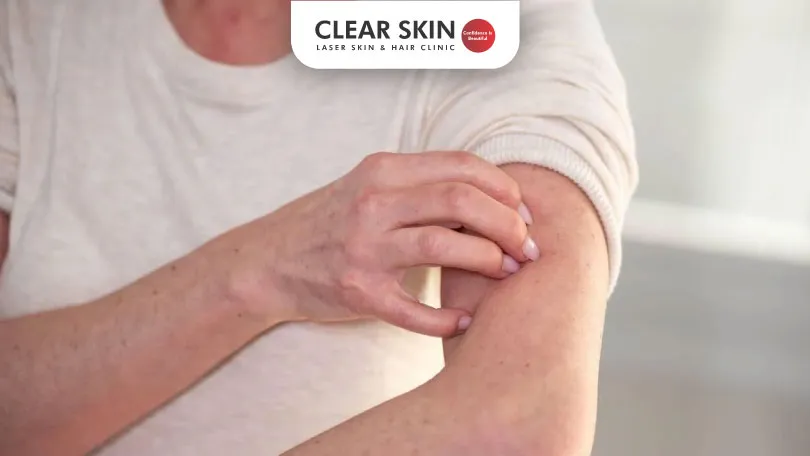Breast reduction is a prevalent concern among individuals who experience discomfort, pain, or self-consciousness due to larger breast size. While surgical options are effective, they often come with risks and recovery times that some may prefer to avoid. Non-surgical breast reduction methods offer an alternative, potentially less invasive approach to achieving desired outcomes.
This article explores various non-surgical treatments and approaches to reduce breast size, highlighting their effectiveness, benefits, and considerations for those seeking to make informed decisions about their body and health.

Understanding Breast Size
Breasts are primarily composed of two types of tissue: fat tissue and glandular tissue. Fat tissue is responsible for the size and shape, providing much of the mass and volume, while glandular tissue is involved in milk production and consists of lobules and ducts.
Several factors influence breast size, including genetics, hormones, and weight.
Genetics play a critical role, determining the proportion of fat and glandular tissues, breast shape, and how breasts change over time.
Hormonal fluctuations, particularly during puberty, pregnancy, and menopause, can significantly affect breast size.
Additionally, weight changes may alter the amount of fat tissue in the breasts, leading to variations in size. Understanding these factors is essential for recognising that breast size can be influenced by a combination of natural elements and lifestyle choices.
Non-Surgical Approaches to Reduce Breast Size
While surgical options, such as breast reduction surgery or liposuction, remain popular and effective methods for reducing breast size, they may not be suitable for everyone. Non-surgical approaches offer alternative ways to achieve smaller breasts without undergoing invasive procedures.
Healthy Diet
A well-balanced, nutrient-rich diet that is low in saturated fats, refined sugars, and high in lean proteins, vegetables, fruits, and whole grains can aid in fat loss across the body, including the breasts. Incorporating foods rich in omega-3 fatty acids, such as fish and flaxseeds, can also contribute to overall health and weight management.
However, there are considerations to bear in mind when choosing diet as a method for reducing breast size. Weight loss from diet changes tends to occur gradually and may not provide immediate results.
Additionally, since genetics and hormonal factors also play a crucial role in determining breast size, the effectiveness of dietary changes may vary between individuals. It is important to approach dietary changes with realistic expectations and to complement diet with regular physical activity for optimal results.
Incorporating Exercise
Regular physical activity can be a highly effective non-surgical approach to reducing breast size. Engaging in Cardiovascular & strength training exercises that promote overall body fat reduction, metabolism & muscle mass can naturally lead to a decrease in breast size, as the breasts are composed largely of fatty tissue.
However, there are important considerations to keep in mind. The rate at which exercise reduces breast size can vary significantly from person to person, influenced by factors such as genetics, hormonal balance, and existing fitness levels. It’s crucial to set realistic expectations and remain patient through the process.
Additionally, individuals with large breasts might experience discomfort during high-impact activities, so investing in a supportive sports bra is recommended to minimise discomfort and prevent injury.
Incorporating a mix of cardiovascular and strength-training exercises, while ensuring proper support and comfort, can make exercise a sustainable and effective method for those seeking to reduce breast size naturally.
Yoga and Stretching
In addition to traditional forms of exercise, incorporating yoga and stretching into a regular fitness routine can also aid in reducing breast size.
Certain yoga poses, such as the triangle pose and the bow pose, target the chest muscles and can help to strengthen and tone the area.
Stretching exercises that focus on the chest, shoulders, and upper back can also improve posture and reduce tension in those areas, ultimately leading to a reduction in breast size.
Furthermore, practicing yoga and stretching can have overall health benefits such as improved flexibility, stress relief, and relaxation.
Breast Reduction Creams
Breast reduction creams are another option that some individuals explore in their quest to reduce breast size. These topical applications generally contain natural ingredients like herbs, essential oils, and plant extracts that claim to work by breaking down fat cells in the chest area. Active ingredients often include compounds such as caffeine, green tea extract, and aloe vera, which are touted for their purported ability to tighten and firm the skin, potentially leading to a reduction in breast size.
However, it is important to approach these products with a healthy dose of scepticism. The efficacy of breast reduction creams varies widely, and there is limited scientific evidence to support their claims. Results, if any, are typically subtle and require consistent use over an extended period.
Always conduct thorough research and read reviews to make an informed decision.
Bras or Compression Garments
For those seeking non-surgical methods to manage breast size, bras and compression garments can offer practical solutions.
Specialised bras, such as minimiser bras, are designed to redistribute breast tissue more evenly, giving the appearance of a smaller bust. These bras often feature wide straps, full cups, and sturdy underbands for additional support and a more streamlined silhouette.
Compression garments, on the other hand, work by applying gentle pressure to the chest area to reduce movement and create a flatter profile. Sports bras and compression vests fall into this category and can be particularly beneficial for individuals experiencing discomfort during physical activities. It’s essential to choose the right fit and material to ensure comfort and effectiveness.
Both options provide temporary results and can be an excellent choice for those looking for immediate solutions without undergoing surgery or committing to long-term treatments.
Hormonal Treatments
Hormonal imbalance is sometimes a contributing factor to enlarged breast tissue. In such cases, addressing the underlying hormonal causes can be an effective non-surgical approach to breast reduction.
Hormonal treatments may involve the use of medications that regulate hormone levels in the body. For example, birth control pills or hormone replacement therapy (HRT) might be prescribed to balance hormones such as estrogen and progesterone.
It is essential to consult a gynaecologist or plastic surgeon before starting any hormonal treatment, as they can assess your specific situation and recommend the most appropriate course of action.
Hormonal treatments should be tailored to the individual, considering factors such as age, medical history, and overall health. Monitoring and adjusting the treatment as needed can help achieve the desired outcomes while minimising potential side effects.
Alternatives to Non-Surgical Breast Reduction
For those who find that non-surgical methods are insufficient or seek more permanent results, there are several surgical options available for breast reduction.
The most common technique is reduction mammaplasty, which involves the removal of excess breast fat, glandular tissue, and skin to achieve a breast size in proportion with the body. This procedure can significantly alleviate physical discomfort and improve overall body image.
Liposuction is another surgical alternative, particularly suitable for those with good skin elasticity and who require only a moderate reduction in breast size. This procedure involves the removal of excess fatty tissue through small incisions, resulting in minimal scarring and quicker recovery times compared to traditional reduction mammaplasty.
It’s crucial to consult with a qualified plastic surgeon to discuss the most appropriate surgical option based on individual needs and medical history. Each procedure carries its own set of risks and benefits, and thorough consultation will ensure that the chosen method aligns with personal goals and expectations.
Consult Us
If you are considering breast reduction and would like to explore your options further, we invite you to consult with our experienced team of professionals. Our specialists in breast reduction are dedicated to providing personalised care and will work with you to understand your unique needs and goals.
During your consultation, we will discuss the various non-surgical and surgical methods available, helping you make an informed decision about the best path forward.
Contact Dr Dhruv Chavan (a plastic surgeon in Pune) today to schedule your appointment and take the first step towards achieving the comfort and confidence you deserve.
For treating your skin condition, feel free to get in touch with one of our best
dermatologists in Pune. You can also call on
+919584584111 to book an appointment at one of our skin clinics near you.













Leave a Comment
Your email id will not be published.Required fields are marked*